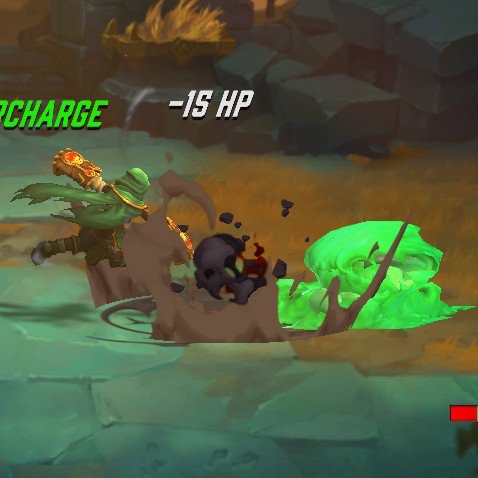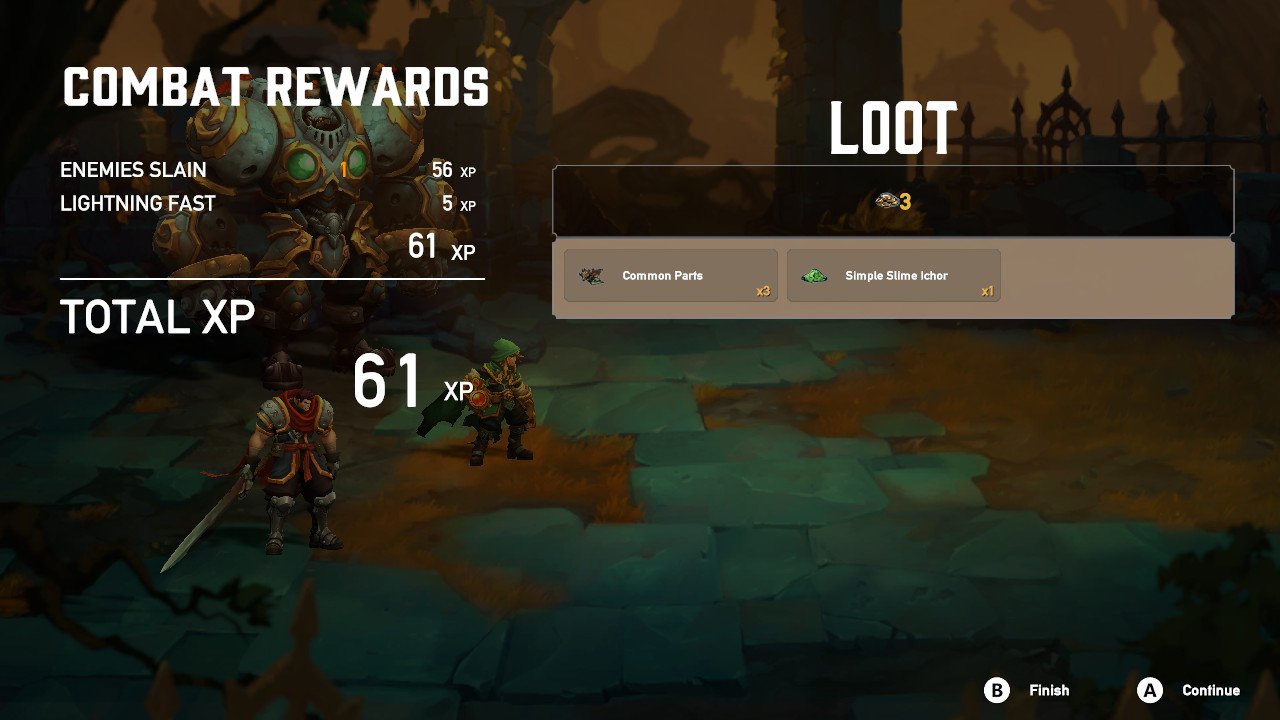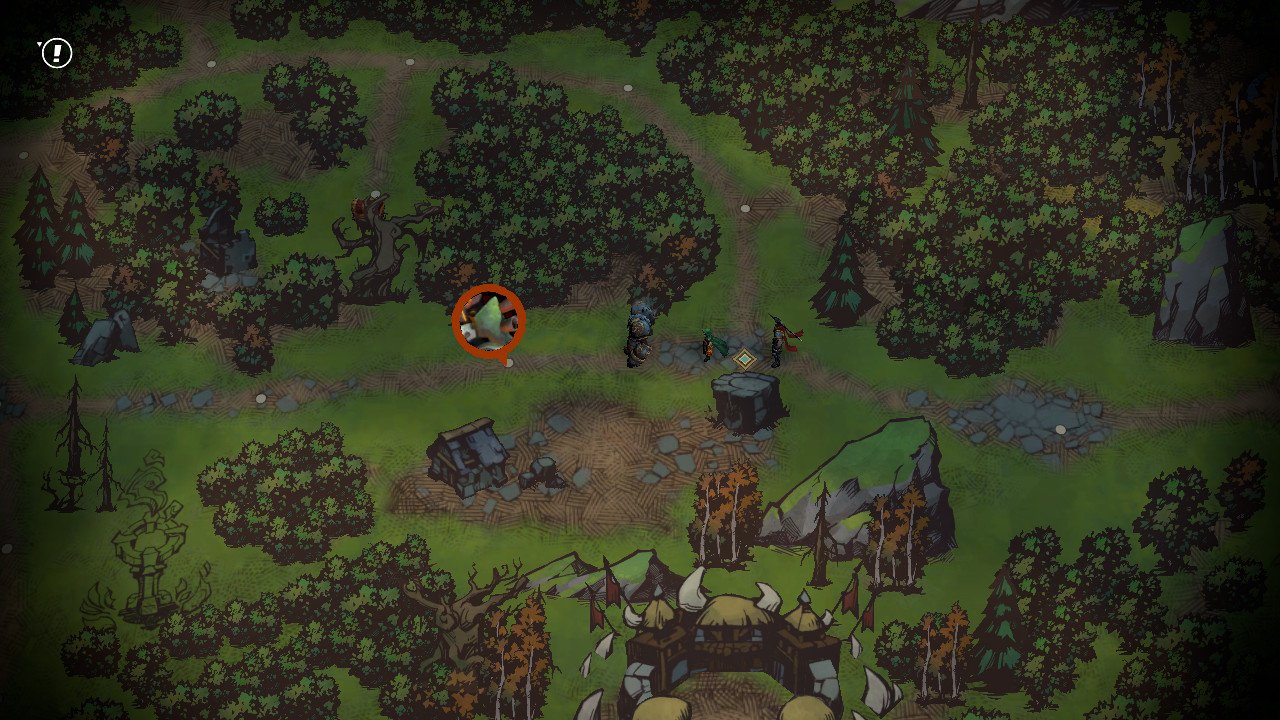Blog / Bandits. Simple as that.
- Date
- May 20, 2018
- Tags
As a game developer, there’s nothing I want more than a passionate audience. Seeing Penny Arcade’s evangelical comic about Battle Chasers: Nightwar plucked an envious string in my heart. It’s exactly my kind of game: a turn-based RPG in the classic Final Fantasy style. I picked it up for Nintendo Switch to have something new to play on the bus. These are my first impressions after an hour of gameplay, having never read a Battle Chasers comic.

The first thing you notice about Battle Chasers: Nightwar is the art style. Soldier guy is a delivery van full of beef squeezed into straining skin. Towering above the humans is a giant robot, looking down at the game designer who despairs at the compromises required to keep it in frame. Leading the charge is Gully, a (I had to research this, I guessed teenage) nine year-old girl, given giant gauntlets so she doesn’t seem entirely like a naif at the protien powder party. I can’t say the exaggerated style is my preference, but this series has been around for such a long time that it feels like the original “giant muscley men and half-naked busty women” comic.
Gully et al. are searching for her missing father Aramus. The airship they’re flying is attacked by bandits and crashes, splitting the party and stranding Gully, her giant robot Calibretto, and the aforementioned van-o-beef Garrison. Now they’re in a spooky island chain where the towns have names like Harm’s Way, searching for their friends so they can resume searching for Gully’s father. Finding Aramus seems like a quest that’s designed to never end, just provide excuses to go here or there and chase battles wait I get it now.

Nightwar’s combat is excellent, reminding me of Final Fantasy X with its delayed actions and portrait shuffling. The attack animations are tremendously impactful, especially as they rumble the joy-cons on the Nintendo Switch. You have the option of using your powerful abilities immediately at the cost of some mana, or you can perform regular attacks to build up “overcharge”, a temporary pool of bonus mana that disappears at the end of the fight. Fights become Power Rangers escalations as you start with normal attacks before getting into the interesting moves. Boss fights are exciting tug-of-wars as you build up and discharge your mana for epic attacks. More delightful is the chatter during the fight. They won’t win prizes for originality, but I adore the little quips each character and monster gets to say.
The bad news is that text on Nintendo Switch in handheld mode is unbearably small. I can tolerate it, but it seems like an obvious missed step in testing. Place me alongside the game icon complainers, we have common cause.
Even more trivial is the weird dismiss button available at the end of combat. Does this seem nitpicky, even for me? When you win a fight you receive money, experience, and some items. That requires two screens: one for XP and leveling, another for material goods and a breakdown of your XP bonuses. Fine.
What I find weird is the ability to dismiss the second screen before it appears by pressing B to “Finish.” It’s not any faster than just mashing the A button, but it has a unique interface for showing you items on the map screen as you wander around. Why did they feel that was necessary? Does the late-game combat review involve more than two screens? Again, not really a complaint, just a weird thing I noticed.

I do have a real complaint about Nightwar’s map screen. While it showcases the moody art of Joe Madureira, it’s completely mechanically uninteresting. Your characters walk along predefined routes between locations like Super Mario Bros. 3 on the NES. Battles are visible as icons on dots that are equally-spaced along each route. Party members are tiny 3D models moving slowly along the tracks like an ancient city bus. Worse is that your green, brown, and grey heroes blend into the green forests, brown roads, and grey rocks. You’re basically watching the camera move through the gloomy environments. And somehow the not-engaging map has a not-acceptable frame rate.
Try to find the player characters in the screenshot below. How much do you have to squint? It’s not quite iPhone-on-carpet bad since the characters move, but it’s weirdly muddy in this otherwise distinctive game.

At least the music is terrific. The tunes are high quality, loop well, and aren’t grating. That’s not damming with faint praise, I’m very happy with it. I like the victory music (peppered with Gully’s cheerful “yay!”), the bombastic sound effects, and the committed voice acting.
I hate to end on a downer note, but I’m not captivated by the plot. It’s an hour in and we’re chasing bandits to find our friends to find Gully’s dad. For all the retro mechanics, they kinda missed the airship on starting with a bang. One hour into Final Fantasy II and you were accidentally firebombing the village of Mist, losing your partner, and gaining a resentful summoner girl. In Final Fantasy III you were an amnesiac magic user escaping the evil empire after they torched a desert castle which then burrowed into the sand. In Chrono Trigger you were infiltrating a church of Naga-nuns as you searched for a way to bring a princess back into the correct timeline.
Here it’s bandits. I’ll keep playing, maybe there’s a plot featuring Red Monika’s struggles with back pain.
